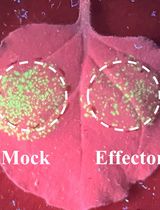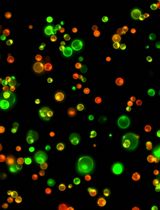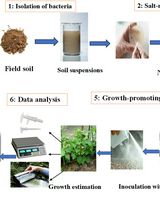- EN - English
- CN - 中文
A Simple and Rapid Assay for Measuring Phytoalexin Pisatin, an Indicator of Plant Defense Response in Pea (Pisum sativum L.)
一种简单快速测定豌豆(Pisum sativum L.)中植物防御反应指标-植物抗毒素豌豆素的方法
发布: 2017年07月05日第7卷第13期 DOI: 10.21769/BioProtoc.2362 浏览次数: 7984
评审: Ayelign M. AdalAnonymous reviewer(s)
Abstract
Phytoalexins are antimicrobial substance synthesized in plants upon pathogen infection. Pisatin (Pisum sativum phytoalexin) is the major phytoalexin in pea, while it is also a valuable indicator of plant defense response. Pisatin can be quantitated in various methods from classical organic chemistry to Mass-spectrometry analysis. Here we describe a procedure with high reproducibility and simplicity that can easily handle large numbers of treatments. The method only requires a spectrophotometer as laboratory equipment, does not require any special analytical instruments (e.g., HPLC, mass spectrometers, etc.) to measure the phytoalexin molecule quantitatively, i.e., most scientific laboratories can perform the experiment.
Keywords: Pisatin (豌豆素)Background
Plants have host resistance and nonhost resistance depending upon the nature of plant-pathogen interactions. Host resistance is mostly controlled by R genes and less durable, whereas nonhost resistance is generally a multi-gene trait and more durable in comparison with host resistance (Gill et al., 2015; Lee et al., 2017). The pea plant has served as a model system for research on the signals that trigger the nonhost defense response when challenged by incompatible pathogens that fall outside that species’ host range (Hadwiger, 2008). An indicator of this response in peas is the induction of a secondary metabolism to the isoflavonoid, pisatin. Pisatin has strong antifungal properties but its presence is a valuable indicator of plant defense response. Pisatin can be quantitated in various ways from classical organic chemistry procedures (Schwochau and Hadwiger, 1969) to Mass-spec analysis (Seneviratne et al., 2015). However, a procedure with high reproducibility and simplicity is described herein that can easily handle large numbers of treatments. The targeted tissue is the inside layer of an immature pea pod, called endocarp. This pristine cuticle-free tissue is capable of responding rapidly to candidate microbes or elicitor compounds to generate the pea defense response. The exposed epidermal layer of cells can be monitored for light microscope-visible or stained cellular component changes. The overall changes that culminate in pisatin accumulations can be determined by immersing the pod half in 5 ml of hexane for 4 h in the dark and subsequently allowing the decanted hexane to evaporate in the air flow of a hood. The residue remaining is dissolved in 1 ml of 95% alcohol and read at OD309 using a spectrophotometer: 1 OD309 = 43.8 µg pisatin/ml in 1 cm pathlength (Cruickshank and Perrin, 1961; Perrin and Cruickshank, 1965; Teasdale et al., 1974). This reading minus the background control tissue and the characteristic UV spectrum are essentially free from other hexane soluble components of the pea tissue. This protocol was used in our recent publications (Hadwiger and Tanaka, 2014 and 2017; Tanaka and Hadwiger, 2017).
Materials and Reagents
- Spatula–smooth narrow tip and smooth glass rod
- Plastic Petri dishes (60 x 15 mm) (Corning, catalog number: 351007 )
- Plastic container with wet Kimwipes inside for humidity
- Paper towel or Kimwipe
- Immature pea pods (1.5-2.0 cm in length) grown in sand and clay pots at 65-70 F under greenhouse conditions and freshly harvested (use within 3 h of applying a treatment). Remove calyx and retain briefly in sterile water (Figure 1). Endocarp will be used for the assay (see Note 1 in detail)
- Glass vials 30 ml
- Candidate elicitor solutions best dissolved in deionized water (For exceptions see Procedure 1)
- DMSO
- Hexane
- 95% ethanol
Equipment
- Adjustable pipettes (P-200 and P-1000 and corresponding tips)
- Flask 500 ml with 5 ml dispenser top or 5 ml pipet for dispensing hexane
- Glass beakers, 30 ml
- Room temperature dark cabinet space for pathogen or elicitor treatments (as described in step 3b)
- UV spectrometer (Shimadzu, model: UV160 )
- 1 cm Pathlength quartz cuvettes (Sigma-Aldrich, catalog number: C5178 )
Note: This product has been discontinued.
Procedure
文章信息
版权信息
© 2017 The Authors; exclusive licensee Bio-protocol LLC.
如何引用
Hadwiger, L. A. and Tanaka, K. (2017). A Simple and Rapid Assay for Measuring Phytoalexin Pisatin, an Indicator of Plant Defense Response in Pea (Pisum sativum L.). Bio-protocol 7(13): e2362. DOI: 10.21769/BioProtoc.2362.
分类
植物科学 > 植物免疫 > 宿主-细菌相互作用
细胞生物学 > 细胞新陈代谢 > 其它化合物
您对这篇实验方法有问题吗?
在此处发布您的问题,我们将邀请本文作者来回答。同时,我们会将您的问题发布到Bio-protocol Exchange,以便寻求社区成员的帮助。
Share
Bluesky
X
Copy link













